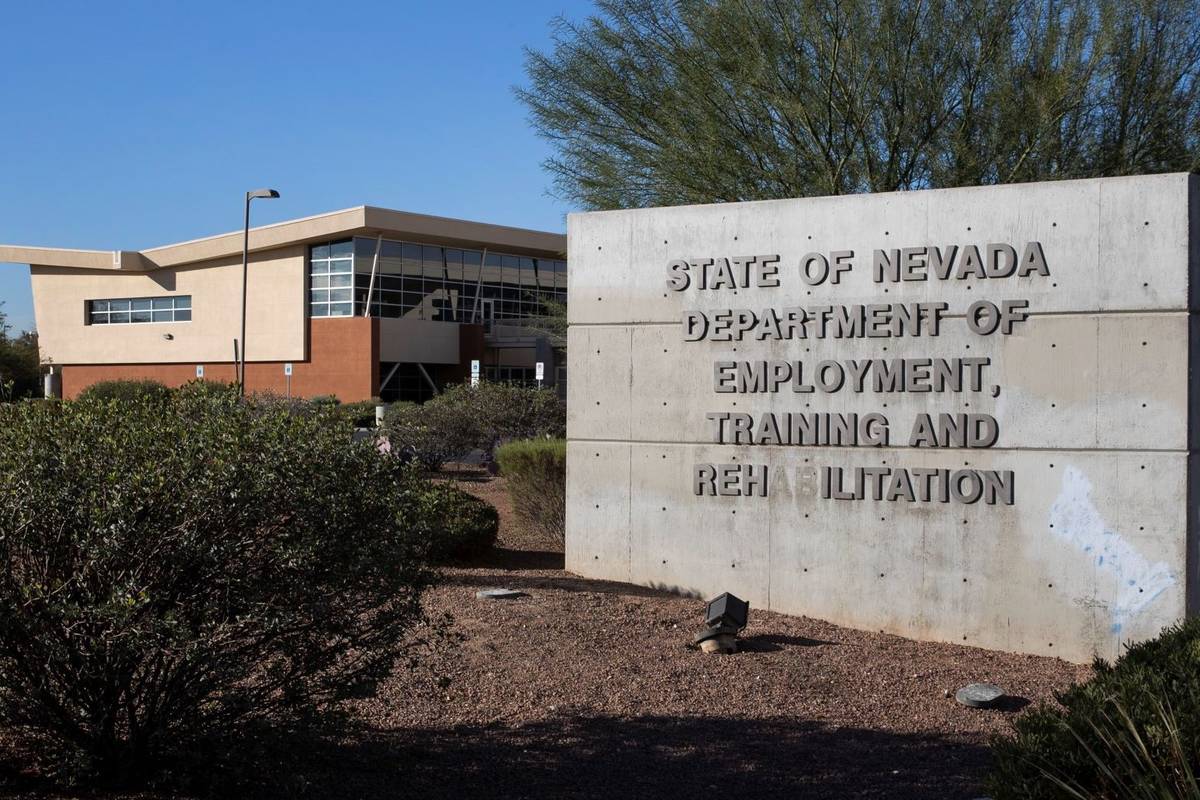Initial claims for PUA top 1 million in Nevada
Initial claims for unemployment insurance for the week ending Jan. 30 totaled 9,821, down 284 claims, or 2.8%, compared to the previous week’s total of 10,105 claims, according to finalized data from the Nevada Department of Employment, Training and Rehabilitation.
There have been 834,138 initial claims filed since the week ending March 14, 2020.
Continued claims, which represent the current number of insured unemployed workers filing weekly for unemployment insurance benefits, totaled 80,891, a decrease of 36 claims from the previous week’s total of 80,927. Continued claims have seen little change over the past six weeks.
Nevada’s Pandemic Emergency Unemployment Compensation program, which provides up to 13 weeks of benefits to individuals who have exhausted their regular unemployment benefits, saw 65,308 claims filed in the week, a decline of 3,820 claims from last week’s total of 69,128.
The passage of HR 133, Consolidated Appropriations Act 2021, updated the number of available benefit weeks for the PEUC program. Originally 13 weeks, starting the week ending Jan. 2, claimants may be eligible for up to an additional 11 weeks of PEUC in certain circumstances.
Nevada’s State Extended Benefit program, which provides additional benefits to individuals who have exhausted both their regular and PEUC program benefits, saw 66,066 claims filed in the week, an increase of 6,285 claims from a week ago. New guidance from the Department of Labor might require DETR to change the sequence of applying and paying out SEB benefits.
The insured unemployment rate for the regular UI program, which is the ratio of regular continued claims in a week to the total number of jobs covered by the unemployment insurance system, was 6.1%, unchanged from the previous week’s rate. Including claimants in the benefit extension programs, the rate, more appropriately called the extended insured unemployment rate, was 16.0%. It should be noted that the calculation of the insured unemployment rate is different from that of the state’s total unemployment rate.
The Pandemic Unemployment Assistance program, which provides benefits for self-employed, 1099 contract workers and gig workers, saw 70,368 initial claims filed in the week ending Jan. 30, a decline of 41,294 claims, or 37.0%, from last week’s total of 111,662. Initial applications for the PUA program continue to be highly variable due to ongoing high levels of fraudulent applications. Through the week ending Jan. 30, there have been 1,032,652 PUA initial claims filed.
There were 118,708 PUA continued claims filed in the week ending Jan. 30, an increase of 22,619 claims, or 23.5%, from the previous week’s revised total of 96,089. This is the highest number of continued claims for the PUA program since early September. Following the passage of HR 133, additional weeks of benefits were made available to PUA claimants, which might explain the increase in continued claims.
Job growth returned in January, but few added
U.S employers added just 49,000 jobs in January, a sign that that the viral pandemic retains a tight grip on the economy nearly a year after it triggered a painful recession.
The increase followed a decline of 227,000 jobs in December, the first loss since April. The unemployment rate for January fell sharply from 6.7% to 6.3%, the Labor Department said Friday. About half the drop occurred because some of those out of work found jobs, while others stopped looking for work and were no longer counted as unemployed.
Friday's figures reflect a faltering job market, slowed by a viral pandemic that is still causing consumers to avoid traveling, shopping, dining out, attending entertainment venues and engaging in other forms of face-to-face contact. Nearly 10 million jobs remain lost to the pandemic.
Some states and localities re-imposed restrictions on businesses in December as cases spiked. Some of those restrictions were loosened in January, though perhaps not in time to affect the jobs report, which measures employment in the middle of each month.
The number of applications for unemployment benefits, though declining for the past few weeks, remained at an elevated 779,000 last week.
The damage to the job market since March has widened financial inequality in the United States, especially hurting women and people of color. At the same time, Americans who have kept their jobs have amassed $2.3 trillion in savings — double the pre-pandemic total. That enlarged pool of savings could fuel a rapid rebound in spending as business restrictions are lifted and more Americans become more confident about shopping, dining out and traveling.
Some hopeful signs have emerged. Auto sales rose solidly in January. A gauge of business growth in the service sector picked up to its highest level in two years. It also showed that services firms added workers last month. A separate measure of manufacturing indicated that factories are also expanding, as is spending on home construction.














